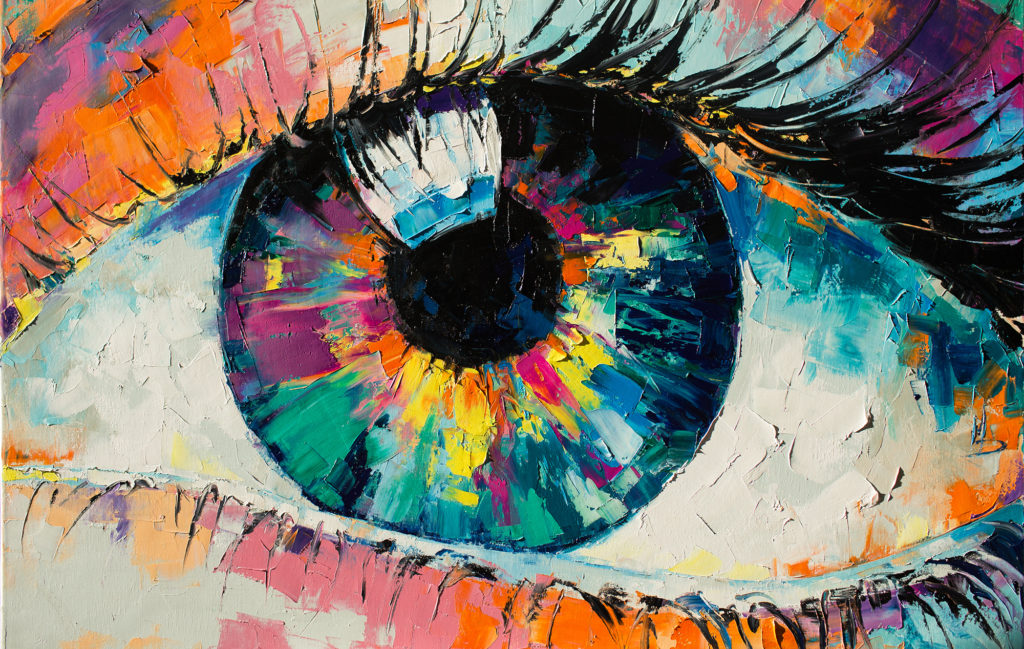Examining the Cultural Effect of Trump Art on Modern Artistic Movements
Examining the Cultural Effect of Trump Art on Modern Artistic Movements
Blog Article
Looking Into the Diverse World of Artistic Expression: From Surrealism to Abstract Realistic Look
In the realm of creative expression, from the dreamlike landscapes of surrealism to the intricate play of light and type in abstract realistic look, artists have continually pushed the borders of creative thinking and creativity. As we discover the multifaceted globe of art, we are provided with a tapestry of designs, techniques, and viewpoints that test our understanding and prompt consideration.
Surrealism: Releasing the Subconscious
Surrealism, a progressive artistic movement of the 20th century, explored the depths of the subconscious, revealing a globe of dream-like images and unconventional juxtapositions. Pioneered by artists like Salvador Dali, René Magritte, and Joan Miró, Surrealism sought to challenge the standard ways of seeing and recognizing art. With methods such as automatism and desire evaluation, Surrealist musicians intended to touch into the unconscious mind to disclose surprise facts and needs.
Among the crucial elements of Surrealism was the focus on the illogical and the incredible. By incorporating unanticipated components in their jobs, Surrealist musicians intended to produce a feeling of disorientation and surprise in the customer. This disturbance of reasoning and reason was indicated to prompt a much deeper expedition of the subconscious and the enigmas of the human subconscious.
Abstract Realistic Look: Redefining Perception
Testing standard creative borders, Abstract Realism redefines understanding through the combination of well-known elements with abstract forms. This innovative strategy to art combines the representational precision of realistic look with the innovative flexibility of abstraction, supplying audiences an one-of-a-kind aesthetic experience that motivates them to question their understanding of truth.
In Abstract Realism, artists strive to catch the essence of their subjects while additionally instilling their collaborate with a feeling of depth and intricacy with abstract elements. By mixing the aware of the unknown, these artists welcome audiences to involve with their pieces on numerous levels, urging them to explore the subtleties of texture, shade, and form.

Cubism: Fragmenting Truth
Utilizing fragmented viewpoints and geometric types, Cubism reinvented the artistic depiction of truth in the very early 20th century. Developed by Pablo Picasso and Georges Braque, Cubism looked for to challenge conventional ideas of point of view and depiction. By breaking down things and numbers right into geometric shapes and providing them from numerous viewpoints all at once, Cubist artists aimed to catch the significance of the subject as opposed to its literal look. This strategy not only deconstructed truth yet likewise stressed the monotony of the canvas, paving the method for future abstract art activities.

Cubism can be categorized into two primary phases: Analytical Cubism, more information defined by monochromatic color design and complex, fragmented types; and Artificial Cubism, which integrated collection aspects and brighter colors into the compositions. With these unique phases, Cubism influenced not only painting but also style, sculpture, and design. trump art. Its influence resounded throughout the art world, inspiring musicians to discover brand-new methods of translating and representing the globe around them
Expressionism: Emotions on Canvas
Discovering the midsts of human emotions through expressive and vivid brushstrokes, Expressionism became an extensive artistic activity in the early 20th century. Unlike previous art movements that focused on showing the external globe, Expressionism explored the inner realm of the artist's subconscious, intending to stimulate raw emotions and prompt visceral responses from visitors.
Expressionist artists, such as Edvard Munch, Egon Schiele, and Emil Nolde, rejected typical notions of elegance and realism for distorting kind and color to communicate subjective feelings. The use of overstated brushwork, strong shades, and altered figures assisted create a sense of unease, alienation, or enthusiasm in their works.
Among one of the most well-known instances of Expressionism is Munch's "The Scream," which captures the extreme anxiety and anguish of modern life via its swirling, distorted number versus a blood-red sky. With their psychologically charged works, Expressionist musicians looked for to challenge traditional imaginative norms and offer a home window right into the rough see post depths of the human heart.
Contemporary Art: Evolving Point Of Views

Among the specifying attributes of contemporary art is its continuous evolution and capability to adjust to changing cultural landscapes. Artists are increasingly integrating innovation into their method, obscuring the lines in between the physical and electronic worlds. This fusion of tools permits for ingenious methods of narration and involving with target markets in an extra interactive fashion.
Moreover, contemporary art typically works as a system for social discourse, resolving pushing concerns such as identification, national politics, and the setting. Musicians are utilizing their job to provoke and spark essential conversations thought, clarifying the complexities of the world we reside in. As viewpoints remain to advance, modern art continues to be look at here now a vibrant and prominent force in forming our social landscape.
Final Thought
To conclude, the world of creative expression encompasses a variety of activities and styles, each with its own unique approach to sharing definition and emotion. From surrealism's exploration of the subconscious to abstract realistic look's redefining of assumption, and from cubism's fragmentation of truth to expressionism's portrayal of feelings, art remains to progress and challenge perspectives - trump art. Contemporary art mirrors the ever-changing globe we reside in, offering brand-new methods to interpret and recognize the intricacies of our truth
As we explore the complex world of art, we are presented with a tapestry of designs, methods, and viewpoints that challenge our understanding and prompt consideration. Its impact resounded across the art globe, inspiring artists to discover new ways of analyzing and representing the world around them.

Report this page